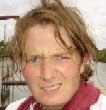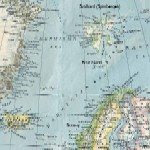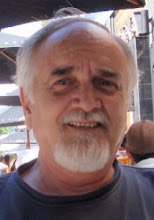
In the land of the blind, the one-eyed man is King.
Along the lines of the Darwin Awards, but inverted:
1. British organization called Plane Stupid, spokeswoman Leila Deen.
2. President of The Republic of Maldives, Mohamed Nasheed, declares that his country will be carbon-neutral within a decade.
3. A movie called The Age of Stupid, aka An Inconvenient Stupidity.
 4. The Globe and Mail, in a fit of pique, responds to bad news from Copenhagen with, "Green is great, but don't overlook the side effects." (That great northern complacency known as k-k-Canada is waiting for the other shoe to drop on 'Global Climate Engineering' eh?)
4. The Globe and Mail, in a fit of pique, responds to bad news from Copenhagen with, "Green is great, but don't overlook the side effects." (That great northern complacency known as k-k-Canada is waiting for the other shoe to drop on 'Global Climate Engineering' eh?)1. Plane Stupid:
Plane Stupid, organization website.





There is an interesting on-line BBC interview which I will find the link for. She speaks well, here it is ... hummm ... for some reason YouTube is threatening to pull the video because of homophobic (?) remarks. I will make a local copy just in case - if it disappears and you want it, just ask.
Then some bright light weasel makes the point that arguing over one airport is not going to solve the global crisis - doh! Have to start somewhere eh? Why not where you are?
 Subsequent controversy:
Subsequent controversy:Globe editorial - Custard's last stand, March 24, 2009.
Mandelson earned that custard, Leila Deen, Monday 9 March 2009.
Makes me laugh ... if the mavens at the Globe and Mail don't like custard, then they probably won't like tar either :-)
2. President of The Republic of Maldives, Mohamed Nasheed, declares that his country will be carbon-neutral within a decade.
CIA Factbook Maldives, Wikipedia Maldives, Maps.
Carbon-neutral goal for Maldives, BBC, 15 March 2009.




The President timed the release of this information to coincide with the release of the film, The Age of Stupid.
Even conservative estimates now put sea-level rise at 1-2 metres, so his good intentions may not bear long-term fruit - the Maldives will be about the first to go. But if he can shame leaders like Stephen Harper into doing something ... all good.
Lots of tycoons & bikinis apparently, Lily Beach Resort for example, very nice at 2,500US$ a night. But not quite a bed of roses either: Islamic terror strikes tourist paradise, AP, Nov. 10, 2007.
3. The Age of Stupid:
The Age of Stupid, official site, Movie Trailer on YouTube.
"We wouldn’t be the first life-form to wipe itself out, but, what would be unique about us is that we did it knowingly," Postlethwaite's character warns in the film.
Critical to the film's editorial independence was the revolutionary way it was financed; by "crowd funding." The money was put in by 223 small investors and groups. At first, the funding came mostly from friends and family - and then their friends and family. The filmmakers retained the rights to everything, including distribution. Cinemas have to submit a request to them to screen the movie and there is no commissioning editor to worry about offending advertisers.
"Independent documentary is the new rock and roll," declares Armstrong. "We’ve got complete freedom to reach people directly."





4. Copenhagen Methane Reports:




a. Sea-level predictions more dramatic, Jan M. Olsen, March 10, 2009.
b. Scientists warn global warming accelerating, Jan M. Olsen, March 12, 2009.
c. Green is great, but don't overlook the side effects, Steve Ladurantaye, March 12, 2009.
d. Hundreds of methane 'plumes' discovered, Steve Connor, Thursday, 25 September 2008.
e. Scientists look at new evidence that climate change is accelerating, 10 March 2009.
f. Increased Methane Levels Recorded in the Arctic, Tudor Vieru, 11th of March 2009.
*****************************************************************
Sea-level predictions more dramatic, Jan M. Olsen, March 10, 2009.
COPENHAGEN — Top climate scientists warned today that sea levels could rise twice as much as previously projected as they presented the latest research on global warming.
A 2007 report by the Intergovernmental Panel on Climate Change predicted a sea level rise of 18 to 59 centimetres by the end of the century. But scientists meeting in Copenhagen dismissed those estimates as too conservative, saying new data suggests that sea level rise could exceed one metre and is unlikely to be less than 50 centimetres.
“This means that if the emissions of greenhouse gases is not reduced quickly and substantially even the best-case scenario will hit low-lying coastal areas housing one-tenth of humans on the planet hard,” organizers said in a statement at the three-day congress hosted by the University of Copenhagen.
The melting of polar ice sheets and of glaciers are two big factors that will affect sea levels, they added.
“Unless we undertake urgent and significant mitigation actions, the climate could cross a threshold during the 21st century committing the world to a sea level rise of metres,” said John Church of the Centre for Australian Weather and Climate Research.
The conclusions of the conference will be presented to politicians meeting in Copenhagen in December to discuss a new global agreement on greenhouse gas emissions to replace the Kyoto Protocol, which expires in 2012.
IPCC chairman Rajendra Pachauri said scientists can analyze the dangers associated with global warming, but that it's up to politicians to do something about it.
“I am afraid that it is something that involves value judgment on the part of policy makers, and I am afraid that they shied away from it,” he told the conference. “It is time to take action.”
Some 1,600 abstracts from nearly 80 countries have been submitted to the conference, which will be attended by Nicholas Stern, the author of a British government report on the cost of climate change.
*****************************************************************
Scientists warn global warming accelerating, Jan M. Olsen, March 12, 2009.
COPENHAGEN — Hundreds of leading scientists warned today that global warming is accelerating beyond the worst predictions and threatening to trigger “irreversible” climate shifts on the planet.
Saying there's no excuse for inaction, the nearly 2,000 climate researchers meeting in Copenhagen urged policy makers to “vigorously” implement the economic and technological tools available to cut emissions of heat-trapping greenhouse gases.
Their stark message came at the end of a three-day conference aimed at updating the findings of a 2007 report by the Intergovernmental Panel on Climate Change before U.N. talks in December on a new global climate treaty.
“The worst-case IPCC scenario trajectories (or even worse) are being realized,” the scientists said in a statement. “There is a significant risk that many of the trends will accelerate, leading to an increasing risk of abrupt or irreversible climatic shifts.”
The climate change panel predicted a sea level rise of 18 to 59 centimetres by the end of the century, which could flood low-lying areas and force millions to flee. But more recent research presented at the conference suggested that melting glaciers and ice sheets could help push the sea level up at least 50 centimetres, and possibly as much as a metre.
“Recent observations show that societies are highly vulnerable to even modest levels of climate change with poor nations and communities particularly at risk,” the statement said.
It noted that policy makers already have a range of tools to mitigate global warming. “But they must be vigorously and widely implemented to achieve the societal transformation required to de-carbonize economies,” it said.
The conclusions of the congress will be presented to politicians when they meet in Copenhagen in December to discuss a new global agreement on greenhouse gas emissions to replace the Kyoto Protocol, which expires in 2012.
“We know from scientific evidence that climate change is a reality and that climate change will have damaging effects on the economy all over the world,” said Danish Prime Minister Anders Fogh Rasmussen, one of the politicians attending the scientific conference. “Therefore we need an agreement and we need an agreement this year.”
Earlier today, British economist Nicholas Stern, the author of a major British government report detailing the cost of climate change, told the conference that the global recession presents an opportunity to build a more energy-efficient economy.
“Coming out of this we have got to lay the foundations for a low-carbon growth, which is going to be like the railways, like the electricity, like the motorcars, this is going to be over the next two, three decades the big driver in investment,” Mr. Stern said.
He added green investments make sense because energy-efficient economies will be more sustainable in the future.
“We know from this crisis that if we postpone looking risk in the face, it will bite us much more deeply,” he said.
*****************************************************************
Green is great, but don't overlook the side effects, Steve Ladurantaye, March 12, 2009.
Most new technologies have an impact on the environment, even if they're meant to be eco-friendly. The challenge is to measure and quantify those effects.
Technology may indeed be the cure to many of our environmental problems, but promising advances can also unleash a wave of unexpected results.
Compact fluorescent light bulbs last longer and use less energy - but they also contain mercury. Solar-power panels reduce the need for fossil fuels - but their production creates silicon tetrachloride, which is highly toxic.
"When you talk to environmentalists it doesn't take long before you start talking about unintended consequences," says Dale Marshall, an Ottawa-based climate change policy analyst at the David Suzuki Foundation.
Mr. Marshall's work has centred largely on the Alberta oil sands and the industry's plans to capture carbon dioxide as it is produced, and then store it in large underground rock formations to prevent it from contributing to climate change. While the technology is still relatively crude, carbon capture is being hailed as an environmentally friendly way to exploit the country's oil supply.
But there's a problem, Mr. Marshall says: If the technology proves successful, that will encourage greater mining activity. And to get at the oil, huge swaths of boreal forests need to come down.
"You're looking at a wasteland the size of the Maritime provinces," he says. "And these forests are huge stores of carbon. So you solve one problem and you walk right into an even larger one."
Richard Hawkins, a professor at the University of Calgary who holds a Canada Research Chair in science, technology and innovation policy, has been tasked with quantifying the effect of information technology - such as computers - on the environment for the Organization for Economic Co-operation and Development (OECD). Later this month, he will present some of his findings at a policy conference in Copenhagen.
"It was once assumed that there was little or no material dimension to information technology, thus, it should be clean with minimal environmental impact," says Dr. Hawkins, who has also been a policy consultant to the European Union and the World Bank. "Reality is much more complicated."
His favourite example involves cellphones. Everyone understands that it takes some energy to produce the phones and keep them charged. Most people have also thought far enough ahead to figure out that when you throw them out, they pose an environmental risk of sorts, in terms of landfill volume if nothing else.
But the unintended consequence, Dr. Hawkins says, is the exponential growth in travel the phones have enabled.
"The technology actually helps us to become hyper-mobile," he says. "We didn't adopt the mobile phone so we could drive and talk on the phone, we adopted it because we were already driving so much. Creating a greener cellphone won't reduce the impact of increased mobility. The real question is, what amount of mobility is sustainable?"
Still, he says many manufacturers are rushing "green" products to market to differentiate themselves from competitors. Just because a computer has a "green" rating doesn't mean it's helping the environment, he says.
"Most of the negative environmental impacts occur in the form of completely unintended second and third order effects," Dr. Hawkins says. "These rebound effects may not be mitigated by inventing greener products and may be intensified by such changes."
Most of the technologies he studied had these rebound effects. He is responsible for finding a way to quantify these findings, so manufacturers and governments can create more realistic models for sustainable technologies.
"Our main task is to try to come up with reasonable indicators so we can measure these footprints," he says of his work with the OECD. "It's a quite detailed scientific enterprise, to say the least."
Dr. Hawkins says governments and companies acknowledge that the IT industry isn't particularly less green than other large industries, but it is incredibly pervasive, with computer chips being implanted in everything from huge mainframes to kitchen refrigerators.
"The world is one giant computer now," he says. "What we're interested in is what effect that deployment of information technology has had on the environment. It's a really tricky and interesting problem."
This doesn't mean that environmental efforts are wasted, he says. In the future, companies that are successful will be the ones that understand the side effects of their green efforts, and ensure the benefits outweigh the negatives.
"Every time you inject technology into something you get what you are expecting - and a lot of what you are not," Dr. Hawkins says.
"But innovation happens all the time, and when it isn't completely positive you need more innovation. That's where the opportunities lie, and it's one of the ways we can generate growth."
*****************************************************************
Carbon-neutral goal for Maldives, BBC, 15 March 2009.
The Maldives will become carbon-neutral within a decade by switching completely to renewable energy sources like wind and solar power, its leader has said. President Mohamed Nasheed told the BBC the Maldives understood better than most what would happen if the world failed to tackle climate change.
His tiny country is one of the lowest-lying on Earth and so is extremely vulnerable to rises in sea level. He said he hoped his plan would serve as a blueprint for other nations.
Mr Nasheed was due to announce the plan formally after the screening of a new film on climate change, The Age of Stupid, on Sunday.
The Maldives is made up of a chain of nearly 1,200 islands, most of them uninhabited, which lie off the Indian sub-continent. None of the coral islands measures more than 1.8 metres (six feet) above sea level, making the country vulnerable to a rise in sea levels associated with global warming.
'Starting from scratch'
"We understand more than perhaps anyone what would happen to us if we didn't do anything about it or if the rest of the world doesn't find the imagination to confront this problem," Mr Nasheed told Newshour, speaking by telephone from the capital, Male.
"So basically, we don't want to sit around and blame others, but we want to do whatever we can, and hopefully, if we can become carbon-neutral, and when we come up with the plan, we hope that these plans also will serve as a blueprint for other nations to follow.
"We think we can do it, we feel that everyone should be engaged in it, and we don't think that this is an issue that should be taken lightly."
It is estimated that the Maldives, which has high levels of poverty, will need to spend about $110m a year to make the transition to renewable energy sources.
Asked how it could afford this, the president said the country was already spending similar sums on existing energy sources, and he expected to recover the extra cost within the decade.
"We start almost from scratch, we are having to go for new investments in almost all areas and it is quite pointless for us to go to yesterday's technologies," he said.
The Age of Stupid stars British actor Pete Postlethwaite as an old man living in a devastated future Earth, watching archive film of the planet and asking why more was not done to combat climate change.
The film's producer, Franny Armstrong, told the BBC the Maldives had set a good example to the developed world.
"I think the challenge has now been laid down by the Maldives, a very poor undeveloped country," she said.
"So now it's over to us, to the rich countries."
An international climate change conference is due to be held in Copenhagen in December to debate initiatives for when the Kyoto Protocol expires in 2012.
UN chief Ban Ki-moon recently urged the world to strike a "conclusive carbon emissions reduction" deal at the conference.
*****************************************************************
Hundreds of methane 'plumes' discovered, Steve Connor, Thursday, 25 September 2008.
British scientists find more evidence of climate threat.
British scientists have discovered hundreds more methane "plumes" bubbling up from the Arctic seabed, in an area to the west of the Norwegian island of Svalbard. It is the second time in a week that scientists have reported methane emissions from the Arctic.
Methane is 20 times more potent than carbon dioxide as a greenhouse gas and the latest findings from two separate teams of scientists suggest it is being released in significant amounts from within the Arctic Circle.
On Tuesday, The Independent revealed that scientists on board a Russian research ship had detected vast quantities of methane breaking through the melting permafrost under the seabed of the shallow continental shelf off the Siberian coast.
Yesterday, researchers on board the British research ship the James Clark Ross said they had counted about 250 methane plumes bubbling from the seabed in an area of about 30 square miles in water less than 400 metres (1,300 feet) deep off the west coast of Svalbard. They have also discovered a set of deeper plumes at depths of about 1,200 metres at a second site near by. Analysis of sediments and seawater has confirmed the rising gas is methane, said Professor Graham Westbrook of Birmingham University, the study's principal investigator.
"The discovery of this system is important as its presence provides evidence that methane, which is a greenhouse gas, has been released in this climactically sensitive region since the last ice age," Professor Westbrook said. An analysis of sediments taken from the seabed show that the gas is coming from methane hydrates – ice-like crystals where molecules of the gas are captured in "cages" made of water molecules, which become unstable as water pressures fall or temperatures rise.
Professor Westbrook said the area surveyed off the west coast of Svalbard was very different to the area being studied by the Russian vessel because the water was much deeper and does not have a layer of permafrost sealing the methane under the seabed.
It is likely that methane emissions off Svalbard have been continuous for about 15,000 years – since the last ice age – but as yet no one knows whether recent climactic shifts in the Arctic have begun to accelerate them to a point where they could in themselves exacerbate climate change, he said.
"We were very excited when we found these plumes because it was the first evidence there was an active gas system in this part of the world," Professor Westbrook said after disembarking from the ship, which arrived back in Britain yesterday. "Now we know it's there we know we have to very seriously consider its effect."
*****************************************************************
Scientists look at new evidence that climate change is accelerating, 10 March 2009.
The meeting on 10-12 March, which takes place nine months before the major UN climate change talks in Copenhagen, will see the scientists look at new evidence that global warming is accelerating even faster than had been forecast by the International Panel on Climate Change (IPCC).
Nairobi, 10 March 2009 – The UN Environment Programme's 2009 Year Book is in part confirming the concerns of 2,000 scientists meeting this week in Copenhagen over the accelerating pace of climate change.
The meeting on 10-12 March, which takes place nine months before the major UN climate change talks in Copenhagen, will see the scientists look at new evidence that global warming is accelerating even faster than had been forecast by the International Panel on Climate Change ( IPCC ).
The 2009 UNEP Year Book, produced on behalf of the world's Environment Ministers, was launched in February at the UNEP Governing Council. As pointed out in the Year Book, the IPCC had estimated that sea levels might rise by between 18cm and 59cm in the coming century – but many researchers now believe the rise will be even higher in part as a result of new assessments of ice sheets in Greenland and Antarctica.
One study now estimates a sea level rise of between 0.8 and 1.5 metres, while another suggests a sea level rise of two metres in the coming century from outflows of ice from Greenland alone.
A one-metre rise in sea levels world-wide would displace millions of people. Around 100 million people in Asia, mostly Bangladesh, eastern China and Vietnam; 14 million in Europe and eight million each in Africa and South America.
2008 had the second smallest area of Arctic sea-ice left following the summer thaw since satellite monitoring began in 1979. The National Snow and Ice Center in the United States found that the minimum sea-ice cover, which occurred on 12 September, was somewhere over 4.52 million square kilometers.
"While 2008 saw 10 per cent more ice cover than in 2007, the lowest figure on record, it was still more than 30 per cent below the average for the past three decades. Taken together, the two summers have no parallel," says the Year Book.
• For the second year in a row, there was an ice-free channel in the Northwest Passage through the islands of northern Canada.
• 2008 also witnessed the opening of the Northern Sea Route along the Arctic Siberian coast-the two passages have probably not been open simultaneously since before the last ice age some 100,000 years ago.
• The Greenland ice sheet, which could raise sea levels by six metres if it melted away, is currently losing more than 100 cubic km a year-faster than can be explained by natural melting.
• Losses from the West Antarctic ice sheet have increased by 60 per cent between 1996 and 2006, while losses from the Antarctic Peninsula increased by 140 per cent.
The Year Book argues that urgent action is needed to curb greenhouse gas emissions, not least because some of the natural carbon storage systems or 'sinks' may be losing their absorption capacity raising the spectre of a runaway greenhouse effect. Studies in 2008 indicates that one key 'sink'-the oceans-are now soaking up 10 million tones less C02.
The Year Book also flags up increasing concern among scientists about releases of greenhouse gases such as methane from the Arctic as ice melts and permafrost thaws in part as a result of new studies indicating that the western Arctic is warming 3.5 times more than the rest of the globe. This concern has taken on even greater importance as a result of two recently published studies.
• A study focusing on North America suggests that upwards of 60 per cent more carbon could be stored in the permafrost than previously supposed.
• An international study has now doubled the amount of soil-carbon in the permafrost across the entire Arctic.
• Marine researchers have discovered more than 250 plumes of methane bubbling up along the edge of the Continental shelf northwest of Svalbard.
• The International Siberian Shelf Study has found higher concentrations of methane offshore from the Lena River delta.
• Researchers calculate that, once underway, thawing of the east Siberian permafrost – thought to contain 500 billion tones of carbon – would be irreversible and that over a century 250 billion tones could be released.
Monitoring of methane levels in the atmosphere indicates that concentrations rose in 2007 and 2008 after nearly a decade of stability. Intriguingly higher concentrations were detected in both the northern and southern hemispheres.
Meanwhile, the Year Book raises concerns over another carbon sink – forests. Rising temperatures may be stressing trees leading to photosynthesis and thus carbon sequestration halting sooner in summer months. Stressed forests may also be more vulnerable to pollution, disease and pests, again undermining their carbon storage potential.
*****************************************************************
Increased Methane Levels Recorded in the Arctic, Tudor Vieru, 11th of March 2009.
Along with the nitrous oxide and carbon dioxide, methane is one of the three gases that has been directly linked to the intensification of the global warming and climate change phenomena throughout the world. And while, sadly, CO2 levels continue to climb on account of all the fossil fuel that is being burnt at this time, those of the other two gases have remained roughly the same over the last decades. However, the concentrations of methane in the Arctic are now beginning to increase, prompting more concerns among scientists that the warming trend on the planet will accelerate again.
The Arctic regions currently find themselves in a vicious circle of sorts. On the one hand, methane is stored deeply into the permafrost, the frozen layer of the earth that covers the tundra. On the other hand, CO2 prompts the warming of the atmosphere, and higher temperatures unfreeze the permafrost and allow methane to escape. So, in conclusion, larger amounts of carbon dioxide in the atmosphere indirectly lead to larger amounts of methane, even though human production of the gas is carefully regulated.
As opposed to the 2004 levels, the year 2007 saw a one percent increase in the amount of methane being emitted by the permafrost on the Norwegian arctic islands of Svalbard, which was a very high increment for just three years. As opposed to the 2006 levels, emissions went up by 0.6 percent, which means that, if the current trend continues, then they could augment by as much as 6 percent within a decade. A high degree of emitted methane would further accelerate this vicious circle, in very much the same way melting glaciers in the Arctic do.
“One theory is that large quantities of methane that are naturally stored in the permafrost of North America and Russia, and under the sea floor in Arctic waters, might be being released into the atmosphere due to warmer temperatures and less snow and ice cover,” Norwegian Institute for Air Research scientist Cathrine Lund Myhre says. According to the latest methane reading recorded around the Arctic, emission degrees have also increased in Northern Canada, in Siberia, and in Ireland as well.
“That is a relatively large increase, especially since methane levels were virtually stable from 1999 until 2005. The increases being bigger at Svalbard than other areas can be an indication that the source is in the far north,” Myhre concludes.
*****************************************************************
Islamic terror strikes tourist paradise, AP, Nov. 10, 2007.
Religious tension hits Maldive Islands, a hot spot for tycoons, superstars
MALE, Maldives - While vacationing tycoons and bikini-clad Hollywood superstars blissfully sipped drinks on the Maldives' secluded white beaches, an Islamic revolution fueled by preachers trained in Pakistan and the Middle East was brewing.
On Sept. 29, the two faces of the Maldives collided when a homemade bomb exploded in a park in the capital, Male, wounding 12 tourists, threatening the critical resort industry and sending the clear message that even this remote corner of paradise is not immune to terrorism.
The attack, and a bloody confrontation days later between police and masked Islamic extremists armed with harpoons, stunned this Indian Ocean nation and threatened its careful effort to balance its traditionally moderate Islamic heritage with liberal Western values.
The government reacted swiftly to crush the fundamentalist movement that had risen amid the palm trees and crystal blue waters of its 1,190 coral islands. Authorities banned the veil, arrested scores of suspected extremists, sealed underground mosques and promised a crackdown on radical preachers.
"We are not taking chances," Information Minister Mohamed Nasheed said.
So far, the violence has not frightened off the tourists, who account for one-third of the economy, he said. But "if there is another attack, then we just close tourism here. And we can't afford that," he said.
By far the most prosperous country in south Asia, with a per capita annual income of $2,700, the republic had seemed safe from the worldwide rise of Islamic militancy. Its longtime ruler, President Maumoon Abdul Gayoom, had harnessed his nation's major natural resource — hundreds of small, deserted islands — to create remote, upscale resorts that fueled explosive economic growth.
But the country also suffered deep divisions.
While many high school graduates went to Europe or Australia for a liberal education, others studied religion at extremist institutions in Pakistan and Saudi Arabia and spread their radical beliefs across the islands, said Rohan Gunaratna, a Singapore-based terrorism expert hired by the government. He estimated that several thousand of the country's 300,000 people now follow these clerics.
"They are preaching a deviant form of Islam," he said.
These once marginal preachers have found a new wave of adherents in recent years. The global outburst of Islamic anger after the U.S. invasion of Iraq and the spread of Internet access to this country's remote islands played a major role in the growing fundamentalism, said Hassan Saeed, the Maldives' former attorney general.
"Suddenly, an island nation cut off from the rest of the world became part of the global village," he said.
So did the Maldives. But despite the relative prosperity, there weren't enough jobs for the huge population of young people, and many turned to drugs or radical Islam, Saeed said. The Islamic Council, the government body that runs official mosques, accredits preachers and controls all aspects of religion here, was still distributing decades-old sermons to its imams and was caught unprepared, he said.
The trauma of the 2004 tsunami, which killed more than 100 people here and devastated many islands, also fueled an Islamic revival. Hussein Mohammed, 40, said he was among 200 displaced people originally from the island of Moondu who spent two years in an abandoned textile factory on the island of Gan before getting a new house. Many in the crowded factory sought solace in the translated copies of the Quran the government provided, and within months nearly all the women began wearing head scarves, he said.
"After something like the tsunami, this frightening thing, people became far more interested in religion," he said.
While many of the fundamentalists were not violent, a Maldivian was caught trying to join the Taliban in Afghanistan, another was arrested in India seeking to buy sniper rifles, and a third was jailed by U.S. authorities in Guantanamo Bay, Saeed said.
"For a small country, there were a large number of alarming signals," said Saeed, who quit the government in August, in part because he felt a report he wrote on the looming problem was ignored.
Like villagers on several other scattered islands, the people of Gan found themselves suddenly confronted by a small group of angry fundamentalists earlier this year.
"They said they are Muslims and others are not Muslims and that others should be killed," said Daoud Ibrahim, the clean-shaven imam at the government mosque. "I have never seen this before ... it's against our traditions."
While rows of villagers in knitted white skullcaps prayed in the spacious mosque with its green tile floors, the fundamentalists — dressed in Saudi-style white robes and headdress — took over a tiny mosque of concrete and corrugated metal meant for Bangladeshi construction workers. They pressured Maldivian women to wear head scarves, mocked clean-shaven men as unbelievers and quietly plotted to drive tourists out, officials said.
Some in the group were tsunami refugees from the remote island of Kalhadoo, which embraced a strict form of Islam more than a quarter century ago under the tutelage of a Saudi-educated preacher named Mohammed Ibrahim. Angry at Ibrahim's dissident Islamic views, the government banished him from Male to Kalhadoo, where he quickly turned the islanders into his disciples, said Yousef Ismail, a former Kalhadoo resident who now lives in Gan. Ismail spoke as his wife sat nearby, covered head-to-toe in a black robe.
Police say at least one of the men on Gan, whose cell phone was discovered in the ocean near the airport, was directly connected to the Male blast. On Wednesday, police said the man, Abdul Latheef Ibrahim, had fled to Pakistan ahead of the blast along with nine other suspects from different Maldive islands. Six other suspects were already in custody.
The nail-packed bomb exploded just before 3 p.m. in a Male park popular with tourists. The blast wounded 12 vacationers from Japan, China and Britain. Though the bomb was poorly built, it was a sign of more attacks to come if the government did not confront the problem, terrorism expert Gunaratna said.
"This is the way it starts, then the bomb-making becomes more sophisticated because they learn," he said.
After the bombing, the band of fundamentalists on Gan disappeared amid conflicting reports they had been arrested, fled abroad or were hiding in the island's lush palm groves or even in their own homes.
The government swiftly launched a wave of arrests around Male and brought in the FBI. On Oct. 7, scores of police landed on the island of Himandhoo, a reputed insurgent stronghold.
The islanders were waiting. Photographs published in magazines showed masked men, some wearing motorcycle helmets and carrying clubs, gathered in an unauthorized mosque they had rebuilt after authorities demolished it last year.
A melee broke out. Islanders stabbed one officer in the leg with a harpoon, slashed another with a gigantic fishing hook and nearly severed the hand of a third, said spokesman Nasheed. When the fighting ended the next day, more than 30 troops and officers were injured and 65 islanders arrested.
In the wake of the violence, the government announced it would encourage moderate Islamic scholars, update the religious curriculum to make it relevant and enforce an earlier law prohibiting women from veiling their faces. But clusters of veiled women continue to walk the streets of Male, underscoring the challenge the government faces.
Nasheed said he also instructed state-owned media to stop glorifying holy war and cease referring to Palestinian suicide bombers as jihadis. State television will hire no new female anchors who wear head scarves and no longer shows veiled women, even in news reports, he said.
The government will stop accrediting imams from extremist schools — many of them in the Middle East — and will fire all the radical scholars serving on the Islamic Council, he said.
"We are trying to replace them with people who have come from Asian countries, except Pakistan of course," Nasheed said.
Officials from the Islamic party Adalaath blame the rise of extremism on political repression that has kept Gayoom in power since 1978. The latest crackdown would only make things worse, said Asim Mohamed, the party's political secretary.
"We feel the government is using that opportunity to oppress the opposition," he said.
Nasheed said the fight against the extremists was too critical to the country's survival for the government to ignore.
"We have always been a very liberal society," he said. "We can't afford to look back 1,400 years."
*****************************************************************
Globe editorial - Custard's last stand, March 24, 2009.
The green custard attack by an environmental protester on a British cabinet minister has reopened the old debate over whether foodstuffs constitute weapons and how seriously and vigorously authorities should prosecute those responsible for using them against public figures.
The latest victim, British Business Secretary Peter Mandelson, treated the green custard attack as if it were a spontaneous food tasting, saying, “It was sort of, I think, organic and non-toxic.” He later delivered a speech in which he joked about the incident, and said British Prime Minister Gordon Brown had given him the nickname “green Pete.” Lord Mandelson has been widely praised for his “self-deprecating charm,” and one British newspaper declared admiringly that Mr. Brown should seize on the political opportunity and “arrange for a few more ministers to be gunged.”
The only hint that this was anything other than a surprise snack break, or part of the usual cut and thrust of politics, or an acceptable case of freedom of expression, came from Lord Mandelson's own expression of mild surprise that the protester was allowed to “just saunter off without being apprehended.” Instead of being dragged off in handcuffs, the attacker was dragged into television studios. A newspaper gave her space to write a column justifying her decision “to throw green slime over him,” some barely literate blather combining personal insult with innuendo.
Only belatedly has Scotland Yard confirmed it is investigating the disgraceful assault, what can only be interpreted as an attempt to embarrass and demean a public official over a public policy disagreement. Something else should be thrown in this case – namely the book at the protester. This should be custard's last stand.
*****************************************************************
Mandelson earned that custard, Leila Deen, Monday 9 March 2009.
I would not have resorted to throwing pudding had this government proved itself capable of mature debate.
Until last week, I wouldn't have believed I could be so serious about custard. But it's no laughing matter that the UK's best chance of leading the world in stopping climate change is being systematically undermined by an unelected stooge for BAA. Some praised Mandelson for laughing it off – of course he did, he rests assured that Britain will go back to ignoring the affront to democracy and progress that he poses. I hope that in the coming year, a big one for climate change, British people will prove him wrong.
I didn't expect to win friends with this action. How wonderful then to have so many people shake my hand for highlighting how illegitimate Mandelson is. Then there was also the inevitable critique, largely coming from the overfed voices of the establishment – and the Sun. Whereas last time Plane Stupid's blockading of Stansted's runway was criticised for "going too far" because it actually affected lives, this action is seen as being "too juvenile" because it didn't harm a soul. What's needed, say critics, is "mature debate".
Slap me silly, where have these people been? As one individual in an anti-runway movement of thousands, I have done nothing BUT debate for the last three years. In that time everyone who counts came out in condemnation of the runway plans: 86% of people who responded to the Heathrow consultation replied that they did not want it. The London mayoral election was run on who could be most against it. Respected research institutions pointed out that it will make it impossible to meet our national commitments to helping prevent catastrophic climate change. The Labour party rebelled in parliament. Even many in the cabinet were opposed.
We have proved that there is no way to reconcile airport expansion with climate change. The false solutions are transparent. The emissions trading scheme is another market solution that doesn't work. No amount of technological tinkering has shown that planes can be fuelled with anything other than dirty old kerosene. The debate is over. We won. But still we must have a third runway. Why? It might have something to do with Lord Mandelson being best friends with Roland Rudd, the head of BAA's PR company, Finsbury.
Yes, custard is a simplistic response to endemic corruption. But at least it highlights the inescapable fact that has somehow eluded these commentators: this government is impervious to mature debate. Remember the debate about Iraq? We marched, we debated, we won the argument. They invaded Iraq anyway.
What about ID cards? The government is losing quite ostentatiously. As debates go, it's a massacre: they can't even manage to explain why they want ID cards. But rest assured, have them we must. Because this government has nothing but contempt for mature debate. They just decide what they want to do to us and then do it.
Nothing exemplifies this style of government better than Mandelson's involvement in the Heathrow decision. Not merely unelected but wholly unelectable, Mandelson is a cuckoo in the nest of British democracy, bullying the other chicks into serving his malevolent corporatist agenda.
Mandelson could not have been more comfortable in co-opting someone else's nest than when he walked into Friday's summit to make promises on a low-carbon economy, despite having been instrumental in ensuring that we are locked in to a high-carbon future that will steal our planet from our children. Mandelson earned that slime I threw on him; he owned it.
Outraged reactionaries all over Britain have set the blogosphere alight over the past few days with calls for my immediate incarceration in a maximum security prison – and on the weekend, I handed myself in and was duly arrested. Mandelson should be able to walk the streets free from the threat of custard, they insist. But so far nobody has explained why. This is our world, our home, our future. If we have five years to stabilise our carbon emissions before catastrophic devastation of our planet is inevitable, and the state refuses to put people before their well-heeled cronies, then we must arm ourselves. If only with peer reviewed science – and pudding.
Down.




No comments:
Post a Comment